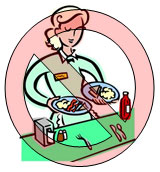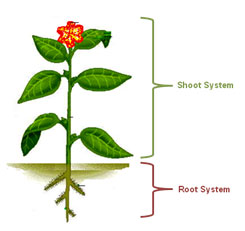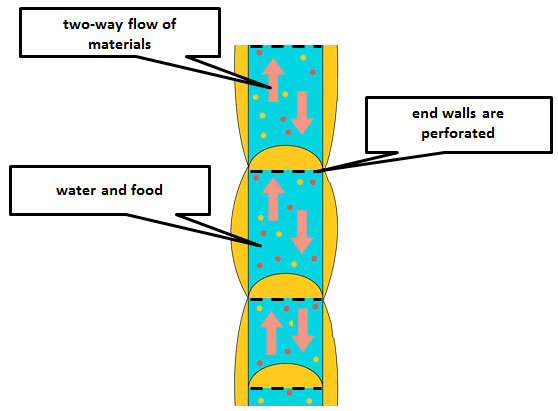

Most photosynthesis occurs in the leaves. So how does the glucose sugar produced during photosynthesis get from the leaves to all the other parts of the plant? The sugar that plants make does not just aimlessly wander through the plant serving up food to the cells.

How do the shoot and root systems interact to perform the function of food transport in plants?
Translocation is the movement of nutrients, such as glucose or sucrose, from leaves to the other part of the shoot system or to the root system. The leaves are called the “source” because they produce more sugar than they consume. The rest of the shoot system and the root system are called the “sink” because they consume and store excess sugars.
Nutrients are transported in the vascular tissue called phloem. Unlike xylem, phloem cells are living cells. Phloem cells are connected by sieve plates. The sieve plates are the end cell walls that are perforated or have holes in them. This perforation allows for easy passage of nutrients from cell to cell.

Adapted From: Xylem structure, Edplace
Energy, in the form of ATP, must be used to move the sugar from the leaves into the phloem tubes and push it down to the other parts of the plant. This is called active transport.
Sufficient water from the xylem is necessary to push the sugar down the phloem to other parts of the plant for either use or storage.
A lack of water through the xylem can inhibit movement of food through the plant to areas of critical growth, like roots. It is the inability of plants to move food to areas of growth in times of drought that limits plant growth, not the lack of photosynthesis.
![]() Watch the following animation to better understand active transport.
Watch the following animation to better understand active transport.